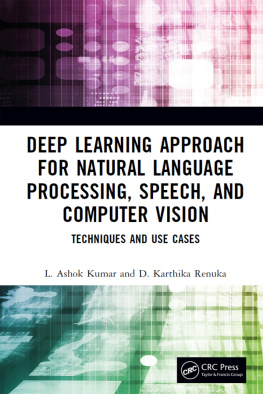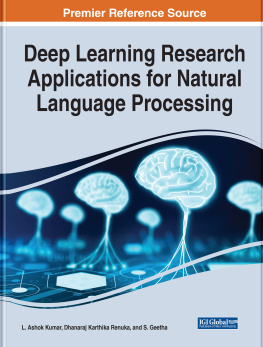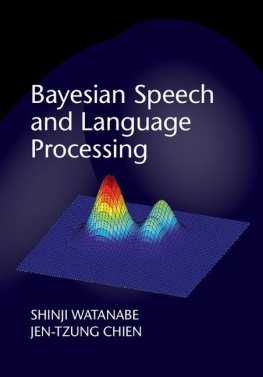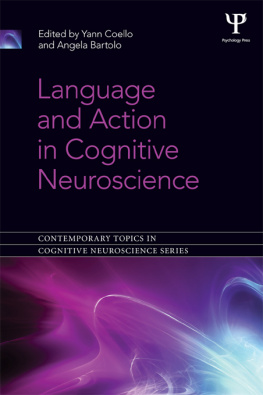Cover
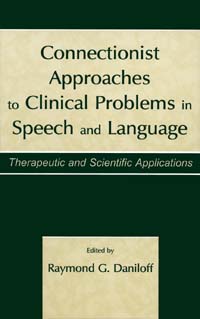
| title | : | Connectionist Approaches to Clinical Problems in Speech and Language : Therapeutic and Scientific Applications |
| author | : | Daniloff, Raymond. |
| publisher | : | Lawrence Erlbaum Associates, Inc. |
| isbn10 | asin | : | 0805822135 |
| print isbn13 | : | 9780805822137 |
| ebook isbn13 | : | 9780585385877 |
| language | : | English |
| subject | Communicative disorders, Connectionism. |
| publication date | : | 2002 |
| lcc | : | RC423.C658 2002eb |
| ddc | : | 616.85/5 |
| subject | : | Communicative disorders, Connectionism. |
Page i
Connectionist Approaches
to Clinical Problems in
Speech and Language
Page ii
This page intentionally left blank
Page iii
Connectionist Approaches
to Clinical Problems in
Speech and Language
Therapeutic and Scientific
Applications
Edited by
Raymond G. Daniloff
School of Allied Health Professions
Louisiana State University Medical Center

Page iv
President/CEO: | Lawrence Erlbaum |
Executive Vice-President, Marketing: | Joseph Petrowski |
Senior Vice-President, Book Production: | Art Lizza |
Director, Editorial: | Lane Akers |
Director, Sales and Marketing: | Robert Sidor |
Director, Customer Relations: | Nancy Seitz |
Senior Consulting Editor: | Susan Milmoe |
Editorial Assistant: | Stacey Mulligan |
Cover Design: | Kathryn Houghtaling Lacey |
Textbook Production Manager: | Paul Smolenski |
Full-Service Compositor: | TechBooks |
Text and Cover Printer: | Sheridan Books, Inc. |
This book was typeset in 10/12 pt. Palatino, Palatino Bold, and Palatino Italic.
Copyright 2002 by Lawrence Erlbaum Associates, Inc.
All rights reserved. No part of this book may be reproduced in
any form, by photostat, microfilm, retrieval system, or any
other means, without prior written permission of the publisher.
Lawrence Erlbaum Associates, Inc., Publishers
10 Industrial Avenue
Mahwah, New Jersey 07430
Library of Congress Cataloging-in-Publication Data
Connectionist approaches to clinical language problems / edited by
Raymond Daniloff.
p. cm.
Includes index.
ISBN 0-8058-2213-5 (cloth : alk. : paper)ISBN 0-8058-2214-3 (pbk. : alk. paper)
1. Communicative disorders. 2. Connectionism. I. Daniloff, Raymond.
RC423 .C658 2001
616.855dc21 | 2001040208 |
Books published by Lawrence Erlbaum Associates are printed on
acid-free paper, and their bindings are chosen for strength and durability.
Printed in the United States of America
10 9 8 7 6 5 4 3 2 1
Page v
Contents
Preface | ix |
| Language Development and Late Talkers:
A Connectionist Perspective | |
Janet A. Norris and Paul R. Hoffman |
| Dynamic Systems Theory: Application to Language
Development and Acquired Aphasia | |
Sarah S. Christman |
| Diagnosis, Prognosis, and Remediation of Acquired
Naming Disorders from a Connectionist Perspective | |
Deborah A. Gagnon and Nadine Martin |
| Modeling Disordered Perception | |
D. Michael Daly |
| Statistical and Neural Network Models for Speech
Recognition | |
Edmondo Trentin, Fabio Brugnara, Yoshua Bengio,
Cesare Furlanello, and Renato de Mori |
| The Roots and Amalgams of Connectionism | |
Hugh W. Buckingham |
Index | |
Page vi
This page intentionally left blank
Page vii
Preface
Parallel and Distributed Processing (PDP), Rumelhart and McClelland (1983), was a paradigm-setting publication. It shook many professions: cognitive science, sensory psychology, linguistics, neurophysiology, computer science, engineering, education and speech pathology, and others, to their roots. It offered novel mechanisms for the explanation of brain functions. Artificial Neural Networks (ANN) inspired by PDP theory have become a preferred way to account for and test information processing of sensory data, pattern recognition, human learning, language formulation and perception, and so on.
In this volume, PDP-derived ANNs are applied to create computational linguistic characterizations of language disorders. Specifically PDP is used to explain language disorders, to plan rehabilitation strategies, and to predict the outcome of language rehabilitation.
Neuro-anatomical structures analogous to neural networks have been discovered in most sensory cortices, beginning with barrels of interconnected visual neurons (Hubel and Weisel, 1962), dedicated to the detection of single visual features. However, the brain is much, much larger (many orders of magnitude) than any conceivable artificial neural network. Moreover, neural networks are better designed for information processing than for central, executive decisions. Modularity theory (Fodor, 1983) maintains that encapsulated, genetically determined and dedicated neural networks operate swiftly and with low error to formulate streams of speech production units for speaking and streams of language units extracted from perceived speech.
Networks compute the most probable units detected and present them as their output to their next module in line. In fact, computation is a key metaphor for characterizing the formulation and perception of language, and it is ANNs that are a major factor in computing the information in verbal communication.
Page viii
This assertion may be presumptious, but it appears that ANN theory will not only dominate machine recognition of speech and language (see Trentin, et. al, Chapter 5 this volume) but will, in conjunction with other theories, explain the swiftness and accuracy of language processing during acquisition and maturation and thus form the backbone of much of language therapy in the near future.
The chapters to follow explore the implications of this assertion.
First, Norris and Hoffman present the results of a decade of their research and thinking on the clinical treatment of developmental language disorders based on a PDP-connectionist model of language learning. They compare and contrast the contributions to their model made by Piaget, Vygotsky, Bruner, Nelson, Elman, and McClelland to name but a few of the scientists who have explored the nature of developmental learning, and language in particular. They offer step-by-step explanation of their clinical intervention and the resulting changes in the child's cognitive processes during treatment. They justify their focus on the use of reading, storytelling, and dialogue as the foundation for clinical reshaping and strengthening of developmentally delayed childrens' language. Throughout, they buttress their points with references to their own extensive research and that of other authorities. Their clinical arguments are cohesive, scholarly, and cast in a readable narrative; they will answer many questions about this exciting, new therapy and provoke fresh ones.
Next page

